Who Were the Hittites?
The Hittites originating from Anatolia (corresponding to modern-day Turkey), carved out an empire (from circa 15th-13th century BC) that encompassed most of Asia Minor and parts of the northern Levant and Upper Mesopotamia. With their strongholds and urban centers poised around the fortress capital of Hattusa, the Hittites, (possibly) referring to themselves as Nesili and known by their Egyptian enemies as Hatti, challenged the might of several powers of the Late Bronze Age, including the ancient Egyptians, Mitanni, and even Assyrians.
But in spite of their military feats, not much is known about the Hittite culture – a distinct civilization in Anatolia that possibly provides some of the earlier glimpses of the Indo-European language set (via cuneiform texts). And like many of the contemporary factions of the Near East and the Mediterranean, the influence and dynamism of the Hittites were snuffed out by the mysterious Late Bronze Age collapse – which in turn led to the emergence of smaller Neo-Hittite states that were soon conquered by ascending Assyrians.
Beyond shrouded cultures and mysterious endings, in this article, we aim to cover the martial scope of the rising Hittite Empire that held sway over most of ancient Anatolia, fueled by both its administrative competency and military effectiveness. So without further ado, let us take a gander at ten fascinating things you should know about the ancient Hittite warriors.
Contents
- Who Were the Hittites?
- The Warrior King of Hittites
- The Hierarchy of Command
- Hittite Manpower and Diplomacy
- The Dual Role of Hittite Aristocracy
- The Professional ‘Defense’ Force
- Military Resettling
- The Class of the ‘Men of Weapon’
- Lightness And Misconception Of Iron
- The Elite Chariot Arm of the Hittites
- Meshedi – The Royal Hittite Guards
- Honorable Mention – The Running Gods
The Warrior King of Hittites
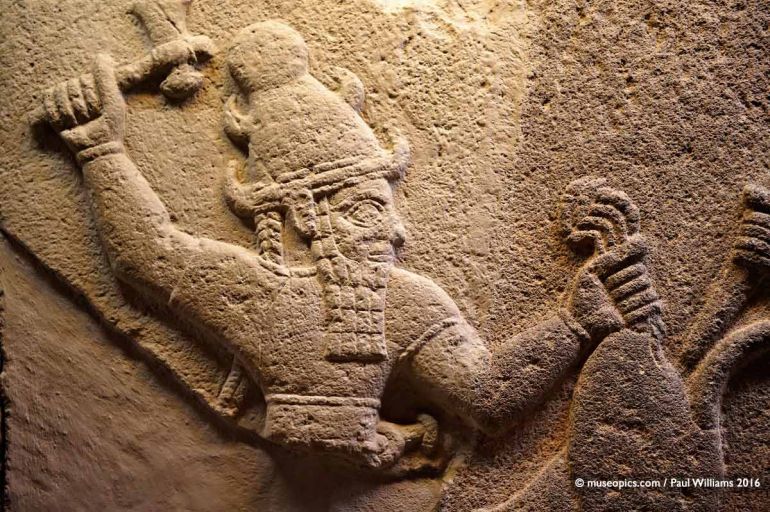
Like in many contemporary late Bronze Age and subsequent Iron Age factions, the Hittite king was perceived as the supreme commander of his army. Beyond just the power of control over the military, the very scope of kingship was epitomized by the king’s ability to physically lead his armies into battle.
Thus a Hittite king was expected to prove his worth in military encounters, and on occasion even engage in hand-to-hand combat with the enemy. Considering the expectation of such feats, the ruler was given military training from a very young age.
There are also accounts of how the crown princes were given actual command of battalions in their teenage years, with one particular example pertaining to future king Tudhaliya IV (reigned from 1237–1209 BC) who commanded the army at the age of 14.
Now of course, beyond expectations, there was also practicality to consider – and to that end, an unfortunate king meeting his death on the battlefield would have caused political upheavals all throughout the Hittite kingdom. So while the Hittite king did take part in actual battles, it can be presumed that he conducted his authoritative affairs from safe vantage points.
And on rare occasions when he did have to actively participate in the fighting, he was supported (and protected) by crack troops who formed the bodyguard units of the royal family (about whom we will talk later in the article).
The Hierarchy of Command
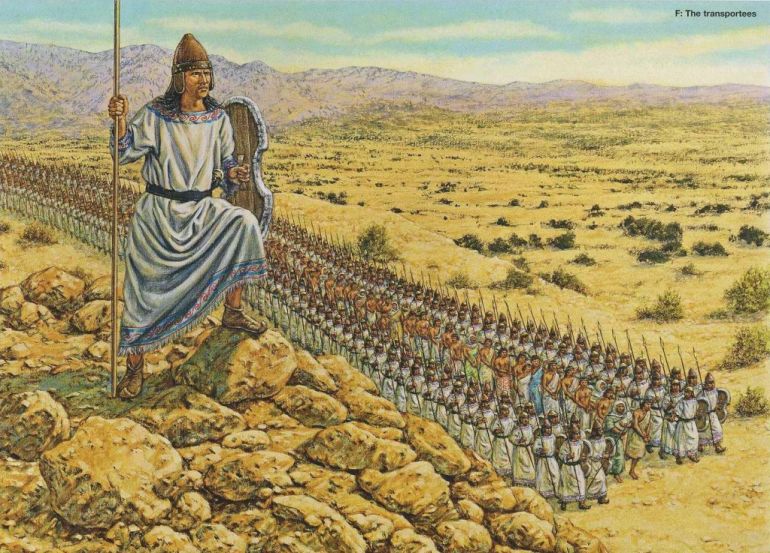
Since we talked about practicality in the earlier paragraph, there were also situations where the king couldn’t take direct command of the fighting army on the field, possibly due to military campaigns being conducted elsewhere or when the ruler had to engage in religious activities (that held importance in Hittite society).
During these times, the command of the army was taken up by a member of the royal family, usually the brother of the king. In fact, many of the prestigious posts of the Hittite army, including command of its bodyguard corps and chariot battalions, were held by the brothers and immediate cousins of the ruler, thus leading to a tightly controlled core military force.
They were followed by the other nobles of the Hittite state, who mainly commanded the smaller divisions of the army. Interestingly enough, as opposed to many other contemporary factions, these commanders were given relative freedom to conduct their own operations that mainly involved forays and raids into enemy territories.
But while they could formulate their own initiatives and tactics, the state-supported warlords and their raiding parties had to report to higher authorities on their military endeavors and progress. On occasions, the lord could be rebuked or even severely punished if he showed incompetence in dealing with his foes.
Finally, the third strata of the Hittite military command entailed the lower-ranking officers, who held titles of ‘overseers’, ‘dignitaries’, and even ‘gentlemen’, corresponding to modern-day variants of captains to sergeants. Their commanded units also varied from containing a substantial hundred men to a paltry ten men.
Hittite Manpower and Diplomacy
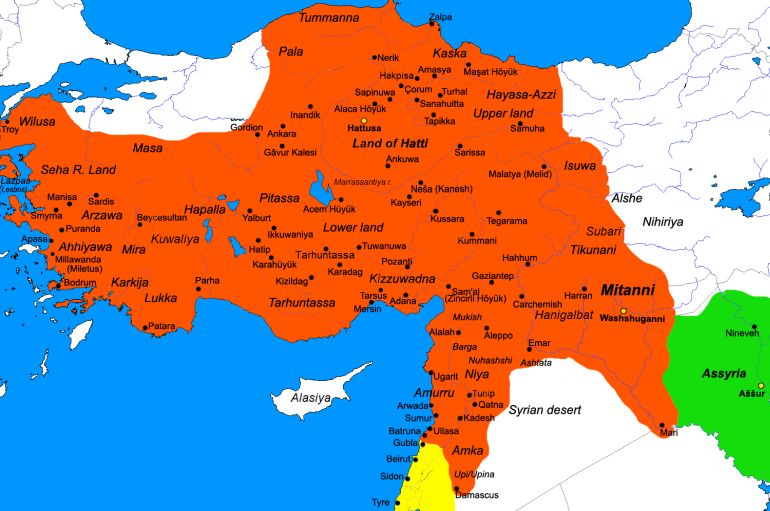
The subject of manpower availability is a rather tricky one, especially when considered in the context of late Bronze Age civilizations and powers. Now objectively, archaeologists have found pieces of evidence of a huge battle in Germany (by banks of the Tollense River) harking back to circa 1250 BC – that involved over 4,000 men equipped with dedicated weapons.
The location, in this case, is crucial to our understanding of military history. That is because, in comparison to Near East, Egypt, and Mediterranean cultures, Northern Europe was a relatively ‘backward’ region when it came to cultural, military, and political institutions of the late Bronze Age.
So reverting to the scope of an organized state like that of the Hittites (and Egyptians), the availability of manpower for military actions must be presumed to be far more streamlined. To that end, according to Ramesses’ account, the Hittites fielded around 47,000 troops against their Egyptian foes at the Battle of Kadesh (fought in 1274 BC) – and this figure can be viewed as being close to accurate.
The reason relates to how the Hittite king must have had the ’emergency’ power to call upon his distant allies for contingents that traveled all the way from the far-flung corners of his empire. The army at Kadesh was probably also reinforced by an unknown number of mercenaries and conscripts who were forced to show up on the battlefield. To that end, many historians have hypothesized that the Hittite army could regularly muster around 5,000 – 10,000 men for their expeditionary campaigns.
However, at the same time, when it comes to history, Hittites also had to deal with chronic manpower shortages during some of their strategic grand campaigns. Part of this had to do with the population and logistics not keeping up with the territorial extent of the rising Hittite empire. The situation was further exacerbated when the Hittite army had to fight on different frontiers and campaigns.
This is when diplomacy came to the fore, a course of action that was rather favored by the Hittite royals, possibly due to the limitations of their military logistics. Simply put, war was seen as the last resort, after all the other ‘peaceful’ options (ranging from diplomatic maneuvers, and bribes to marriage alliances) had been spent.
But once the scenario demanded military action, the Hittite kings were expected to try their best to bolster the engaging army with strategic decisions, logistical supplies, and of course personal bravery.
The Dual Role of Hittite Aristocracy
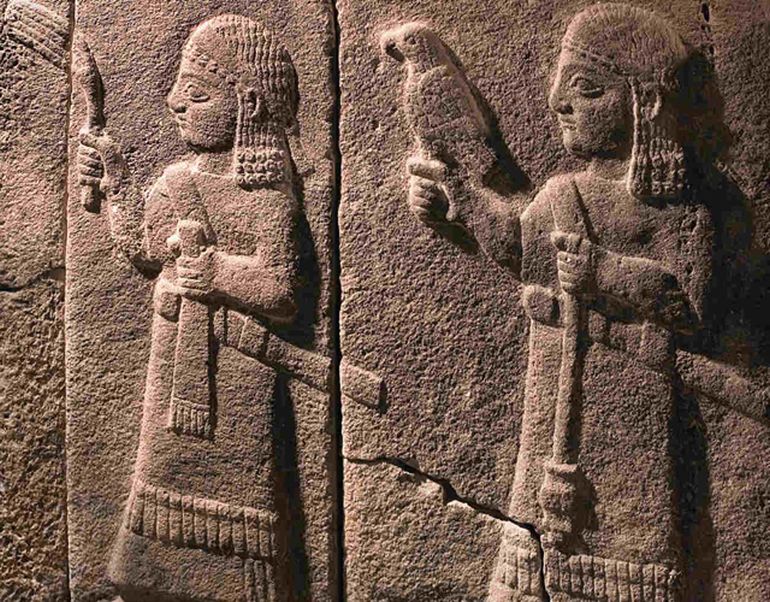
Till now, we have talked about the military roles fulfilled by the royals and the nobles of the burgeoning Hittite society. However, at the same, in many contemporary late Bronze Age and Iron Age societies, the nobility also had their fair share of religious and spiritual duties.
For example, Egyptian New Kingdom pharaohs were sometimes depicted as incarnations of the god of war and valor Montu (falcon-god) or as personifications of Egypt itself. Similarly, in the case of the Hittites, the king also took up the mantle of the highest judicial authority and even in some cases the role of the chief priest.
As for the elites of the Hittite society, most of the high-ranking nobles, who contributed to the core of the army, unsurprisingly belonged to the landholding class. Their large rural estates bolstered the agriculture of the country with a plethora of crops, livestock, and orchards – which in turn made their military duties seasonal, with productive months equating to less raiding, forays, and campaigning.
Simply put, these men left their homes and went to war to protect (or increase) their own lands and wealth, as opposed to opting for just a ‘career’ – much like the early Romans. To that end, the allure of plunder and booty, in the form of both prisoners-of-war and livestock, was reason enough for many of the aristocratic families (especially those settled on the frontiers) to try their hand at providing military aid to their king.
The Professional ‘Defense’ Force
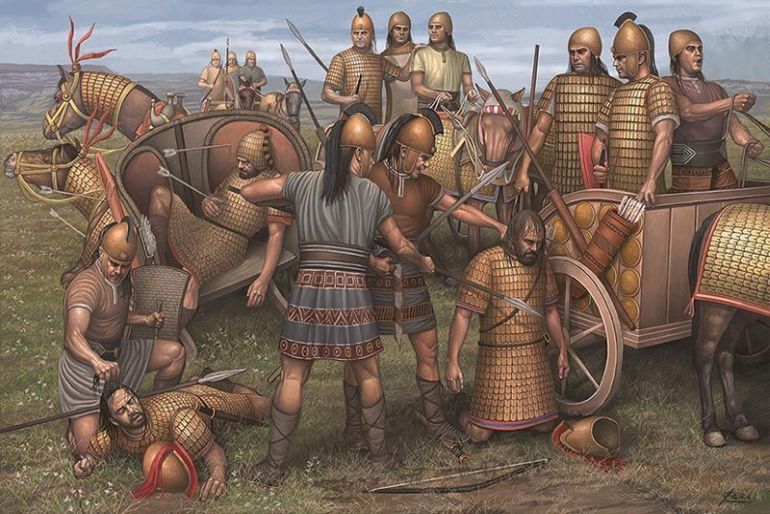
We fleetingly mentioned the lower-ranking officers and the soldiers of the army who roughly corresponded to the third strata of the Hittite military. Now as opposed to the higher-level commanders, governors, and warlords, these men actually did make a ‘career’ out of their military inclinations.
In essence, these men were employed almost full-time as soldiers who could be called at a moment’s notice at any time of the year to fight for their overlord and the kingdom. In many ways, they formed the core of a defense force that was ready for mobilization at the king’s command.
Interestingly enough, most of these men were housed in provincial barracks and were provided with rations all throughout the year. While a significant percentage of these soldiers volunteered to join the military career (with its fair share of dangers), many were conscripted into their ranks based on the quota requirements of the Hittite-governed province.
The responsibility of selecting such troops fell upon the governors, who were directed to only pick free men and not slaves. Moreover, the king also established rigorous rules that didn’t allow the substitution of the said soldier with money, thus hinting at a strict state-controlled conscription policy that was devised to maintain a threshold of manpower (comprising trained soldiers) for military activities.
Military Resettling
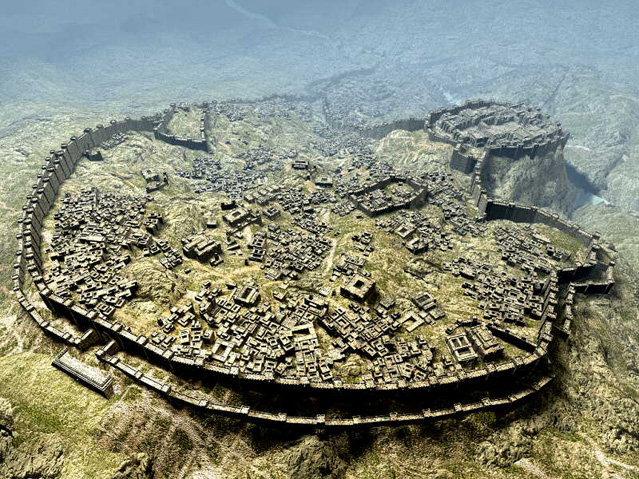
Other than the aforementioned core of the defense forces conscripted from the native Hittite provinces, the army also depended on the warriors of the conquered regions. In that regard, the state followed the policy of mass resettling of the adults from the fringe conquered areas to the home provinces around the fortress of Hattusa – the capital of the Hatti.
Suffice it to say, that some of these subjects were taken as slaves and distributed among the royal family and the landowning aristocracy, some were forced into labor or temple duties, while the remaining hardy ones were pressed into the army. On occasions, entire families were uprooted and resettled in population-dilapidated frontier regions that were afflicted by constant wars.
Quite intriguingly, there had been historical scenarios where the prisoners of war were formed into battle-worthy units that were commanded by their own leaders and served in the home provinces of the Hittite empire.
Furthermore, the Hittites also made use of able-bodied conquered subjects who were not actually forced into service but rather employed as foreign contingents. One of the examples would pertain to the Kaska tribesmen, who had been long-time adversaries of the Hittites, and thus were valued for their martial inclinations and battle experience.
The Class of the ‘Men of Weapon’
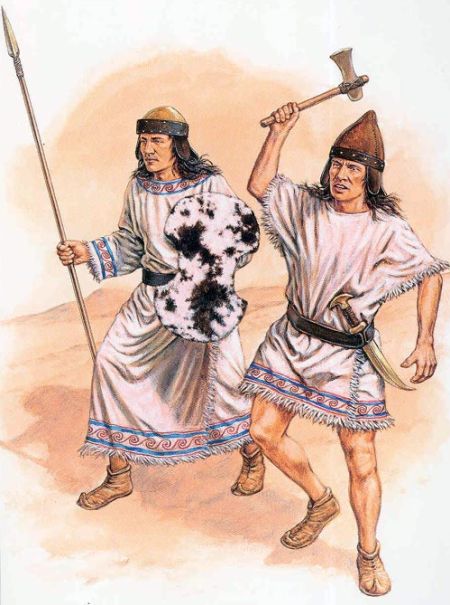
Finally, beyond nobles, native soldiers, and foreign warriors, the Hittite army was also bolstered by a separate class of men, and they functioned as reservists. Known as the Lu Gistukul or ‘Men of Weapon’, these militia-type troops functioned in a similar manner to the Anglo-Saxon fyrd. Essentially, they were armed with better weapons than the ‘rabble’ of the civilian conscripts and could be called upon during campaign seasons.
However, during most parts of the year, they were engaged in agricultural activities. While regular soldiers were directly paid by the state (often in the form of rations and housing), these reservists were paid in small lands – that could be cultivated by their family members for sustenance. Now once again, while in theory, this system works, the practicality of campaigns demanded better-trained soldiers than readily available (yet less effective) troops.
So over time, the policy of endowing lands was relegated in favor of retaining the services of these men through other forms of administrative employment. Simply put, the ‘Men of Weapon’ evolved into an administration-supporting economic class of free men that lost its military purpose in the later years of the Hittite Empire.
Lightness And Misconception Of Iron
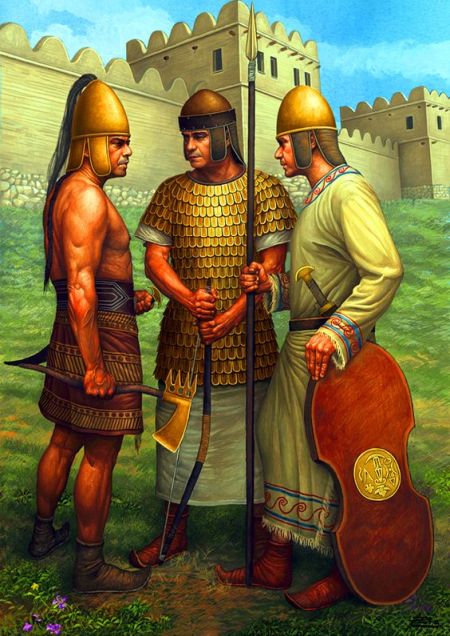
Archaeological pieces of evidence of armor combined with visual representations (including carvings and depictions) of Hittite warriors found at Hattusa have more or less established that the ordinary soldiers of the army probably wore light attires during long marching and campaigns.
This rather presents the practical side of affairs, since heavy armor could seriously hamper the stamina of the marching men, especially in the hot, arid climates afflicting the semi-desert regions of Anatolia, Syria, and the Levant.
But that is not to say that the soldiers didn’t wear any form of armor. Some of the higher-ranking troops probably did don their scale armor during battles – that was worn along with leather jackets and belted kilts (items that were pretty ubiquitous in the Hittite army).
The protective gear for most soldiers also included the leather-made helmet with plume, neck, and cheek guards, along with the basic rectangular shield (comprising leather stretched over a wooden frame).
As for offensive equipment, the Hittites mainly made use of swords of the short, stabbing variety (though there is also archaeological evidence of long swords of the slashing variety from Hattusa), mostly in compact areas like mountainous terrains and forested regions.
Infantrymen were additionally trained in using spears for both melee combat and throwing, especially when the battlefield tended to be open, like in plains. In any case, there is a common misconception that the Hittites regularly used iron-furnished weapons that provided them with an ‘edge’ over their enemies.
Now while the Hittite culture is known as the forerunner of the Iron Age, their advanced iron-works were mostly limited to artifacts and trinkets, as opposed to mass-produced weaponry. Even the majority of the rare iron weapons were possibly made from the meteorite variety (before circa 1200 BC), which made them extremely expensive (and thus were used as kingly gifts) and more brittle than their bronze counterparts (due to the nascent stage of iron smelting technology).
Simply put, there was limited demand for iron weapons in the age we are talking about (circa 15th-13th century BC), which would have made their technological impact on the battlefield pretty unnoticeable.
The Elite Chariot Arm of the Hittites
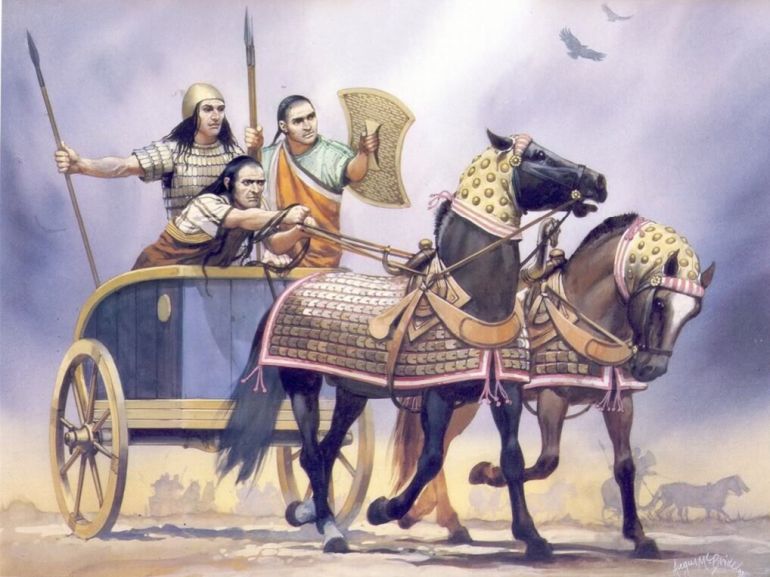
Like many of the renowned armies of the Late Bronze Age, the chariot contingent of the Hittites formed their most elite offensive arm during large-scale open battles. In fact, the Battle of Kadesh fought in 1274 BC, between the Hittites and the Egyptians, is believed to be the largest chariot encounter ever fought, involving between 5,000 and 6,000 chariots in total.
To that end, it can be hypothesized that the Hittite chariot corps were provided with the best training available in the kingdom, and most of these exercises possibly focused on the maneuvering and shooting of bows – the main weapon carried by the platform-perched warrior.
In essence, we must understand that shooting from the level ground was very different from shooting while stationed on a moving platform. The latter had to take into consideration his timing, dynamic angles, and changing aerodynamics while being perched on a vehicle that often crossed through uneven terrains and ditches.
Suffice it to say, the charioteer-bowman had to be far more proficient in his archery skills, thus suggesting his elite status within the army. The trained charioteers even had to showcase their skills in front of the king, with the winners being awarded cups of wine, while ‘losers’ were made to drink some unsavory concoction (possibly comprising urine).
The training of the charioteers went beyond archery to account for general maneuverability on the battlefield. Many of the drivers practiced their runs during the night for better adaptability and tactical ploys. Over time, the hefty Hittite battle chariot, though still pulled by two horses (stallions), was used for carrying three men, as opposed to just the driver and the warrior.
This third member functioned as a shield-bearer of sorts who protected the main warrior from enemy projectiles. Aided by such improved levels of protection, the warrior was free to use his long spear for thrusting or throwing and finally switched to his main weapon of a bow for inflicting heavy casualties among the ranks of the foe.
Meshedi – The Royal Hittite Guards
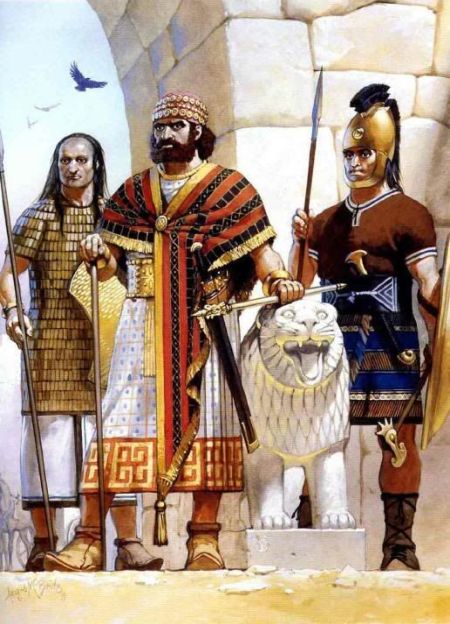
Earlier we talked about how the royal family members often commanded the prestigious units of the Hittite army. One of them pertained to the Gal Meshedi (or ‘Chief of the Bodyguards’), a high military rank usually held by the brothers of the king himself.
The Meshedi bodyguards were also accompanied by another division of elite soldiers who were simply described in Hittite sources as ‘Men of the Golden Spear’; thus making them akin to the later Immortals (Amrtaka) of the Achaemenid Persian Empire who carried golden spears – according to Herodotus.
Anyhow, during battle scenarios, the Meshedi bodyguards were tasked with physically defending the king from enemy combatants and assailants. But beyond the scope of combat, some of these crack troops were chosen to guard the king’s quarters, while some were handpicked to protect royal assets and residences throughout the empire.
A few of them were also selected to become royal messengers, while others were given the unenviable honor of performing the role of the royal executioner. Moreover, the fraternity openly advocated their symbolic bond with the monarch by holding celebratory competitions like footraces – the winner of which was offered the ‘prize’ of holding the reins of the king’s horse when he dismounted.
Honorable Mention – The Running Gods
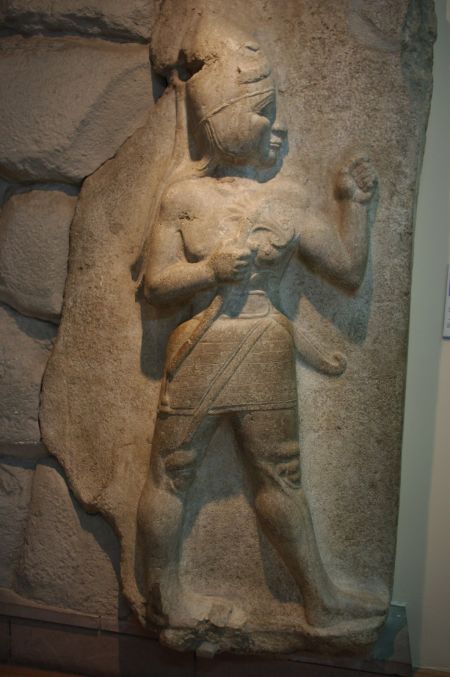
Plumed helmet, leather kilt, bare torso, and thick plaited hair – this is how the Hittite patron deity Sharrumma is (probably) depicted by a carving inside one of the three main gates of Hattusa. Bearing resemblance to the ubiquitous Hittite warrior of the 13th century BC period, the gods were represented in a more intrinsic fashion by the Hittite culture.
In essence, as opposed to some lordly elevated figure overseeing the battlefield, the Hittites believed that their gods accompanied their warriors while marching and even ran before the army into the fray of the battle.
Sources: Tour Egypt / PericlesPress / KhanAcademy
Book References: Hittite Warrior (By Trevor Bryce) / The Kingdom of the Hittites (By Trevor Bryce)
And in case we have not attributed or misattributed any image, artwork, or photograph, we apologize in advance. Please let us know via the ‘Contact Us’ link, provided both above the top bar and at the bottom bar of the page.
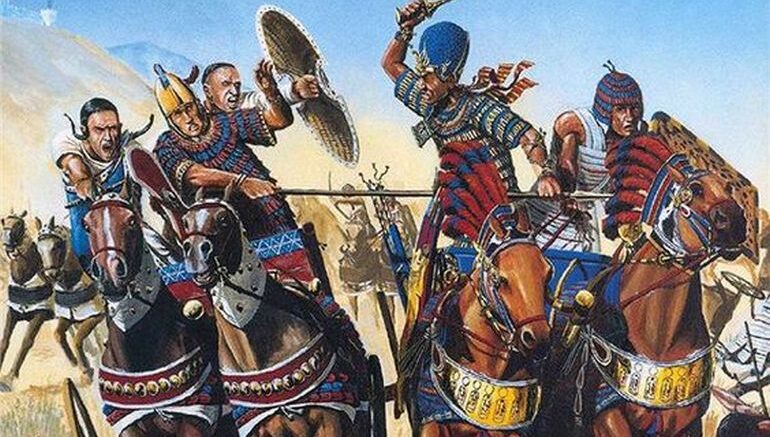
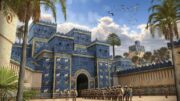
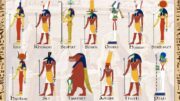
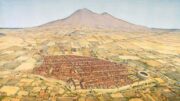
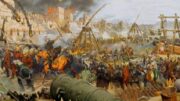
Be the first to comment on "Ancient Hittite Warriors: The Formidable Fighters of the Bronze Age"